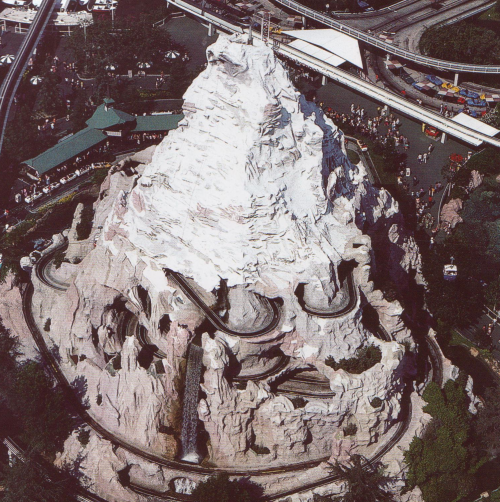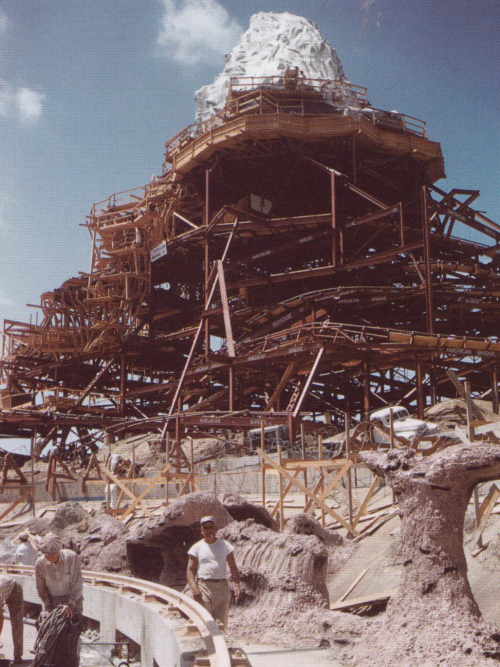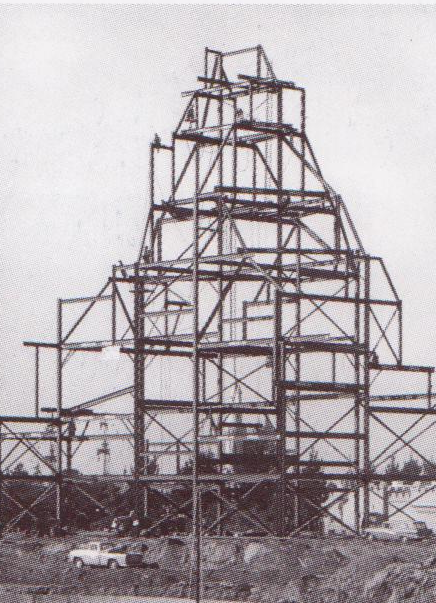
Let’s say right off the bat that it’s not the “Matterhorn.” Official term for it was “Matterhorn Bobsleds, because the included roller coaster was a big deal. Such a big deal: the first steel roller coaster in the world.
But we’re less interested in the bobsleds than in the mountain itself–a 147-foot fake mountain rising out of long-disappeared Southern California orange groves. The snow, according to John Hench in Designing Disney, is an “astonishingly realistic silvery-white blue-shadowed snow.” The designers nudged the peak to make it a bit more lop-sided than the original, creating more of a shadow effect on the side of the Disney mountain. The “real” Matterhorn is 14,700 feet, which makes the Disney version about 1/100th the size of the original.
Before the Matterhorn
The Matterhorn (let’s just call it that) began as a 20-foot mound of cast-off construction dirt. Walt Disney eventually sculpted the mound to make it more attractive and called it Holiday Hill. But still, his imagination couldn’t rest. After a 1958 trip to Zermatt, Switzerland to observe the filming of the Disney movie Third Man on the Mountain, Disney came up with the idea of building a scale replica in Anaheim.
Building the Matterhorn
In 1959, the hill (since named Snow Hill) was bulldozed and work begun on the steel framework for the Matterhorn by WED (the Disney group), Arrow (the roller coaster builders), and American Bridge Company. 2,175 steel pieces were used–all different sizes. Enough plywood for 27 homes and 500 tons of concrete were used, too. Four waterfalls were created. One waterfalls was 50 feet tall.
Forced Perspective
One way to “force” the illusion of height in any kind of structure is to use forced perspective; the Matterhorn was no exception. Full-sized spruce trees were planted at the bottom of the Matterhorn, with trees decreasing in height farther up the mountain. Towards the “treeline” (about 65 feet up, or halfway up the mountain), the smallest trees were planted: two-foot-tall pinion trees from Arizona.
Skyway
One advantage of the Matterhorn, in early years, was that it hid one of the Skyway’s support towers. The Skyway actually ran through the Matterhorn, giving visitors a glimpse of the mountain’s inner steel skeleton. In 1994, the Skyway ran its last car through, and the holes in the side of the Matterhorn were sealed off for good.

Matterhorn Size Comparison
The “real” Matterhorn in Switzerland is 14,700 feet tall; the “fake” Matterhorn in Disneyland is about 1/100th that size.
